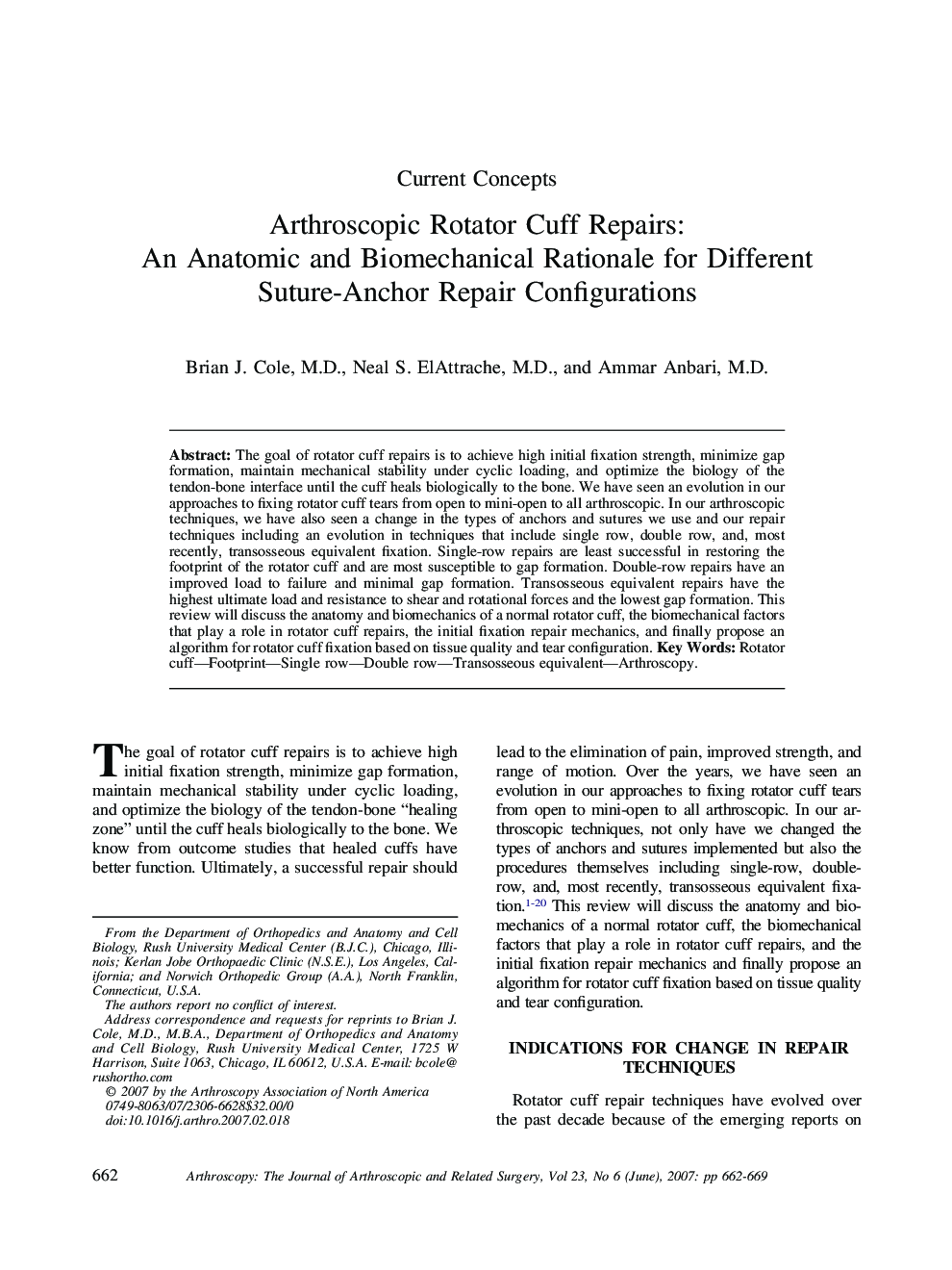| کد مقاله | کد نشریه | سال انتشار | مقاله انگلیسی | نسخه تمام متن |
|---|---|---|---|---|
| 4046773 | 1603596 | 2007 | 8 صفحه PDF | دانلود رایگان |

The goal of rotator cuff repairs is to achieve high initial fixation strength, minimize gap formation, maintain mechanical stability under cyclic loading, and optimize the biology of the tendon-bone interface until the cuff heals biologically to the bone. We have seen an evolution in our approaches to fixing rotator cuff tears from open to mini-open to all arthroscopic. In our arthroscopic techniques, we have also seen a change in the types of anchors and sutures we use and our repair techniques including an evolution in techniques that include single row, double row, and, most recently, transosseous equivalent fixation. Single-row repairs are least successful in restoring the footprint of the rotator cuff and are most susceptible to gap formation. Double-row repairs have an improved load to failure and minimal gap formation. Transosseous equivalent repairs have the highest ultimate load and resistance to shear and rotational forces and the lowest gap formation. This review will discuss the anatomy and biomechanics of a normal rotator cuff, the biomechanical factors that play a role in rotator cuff repairs, the initial fixation repair mechanics, and finally propose an algorithm for rotator cuff fixation based on tissue quality and tear configuration.
Journal: Arthroscopy: The Journal of Arthroscopic & Related Surgery - Volume 23, Issue 6, June 2007, Pages 662–669